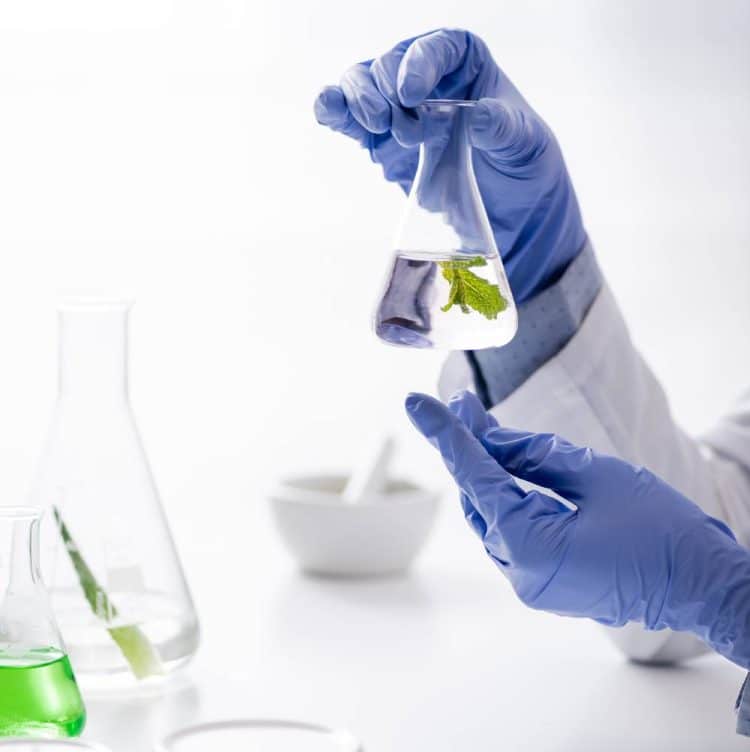Synthetic compounds are commonly used as food additives and in pharmaceutical and cosmetic products, but safety concerns may be linked to them. [1] Phytochemicals are a suitable alternative to synthetically produced molecules, but they need to be properly isolated from the plant source in efficient and safe ways: researchers are continuously looking at implementing botanicals extraction in the attempt to optimize the process and obtaining high-quality extracts. [2]
As highlighted in a recent study investigating the methodology and optimization of phytochemical extraction from the plant Thymelaea hirsute L., [3] various factors can affect the quality and yield of the final extract:
- Extraction solvent
- Extraction time
- Extraction temperature
- Extraction pH
- Agitation rate
- Particle size
The approach to get the desired data about the extraction efficiency included the systematic study of the following parameters:
- Temperature (24- 60 degrees Celsius)
- Time (2-18h)
- Solvent (0-100% methanol/ ethyl acetate proportion)
In total, 16 experiments were carried out to find optimal extraction conditions that for Thymelaea hirsuta L. were:
- Temperature 46 degree Celsius
- Time 9 hours
- Methanol proportion 96%
The presence of phenolic compounds in the aerial parts of the Thymelaea hirsuta plant was highlighted during the study and they could replace synthetic-produced additives in products. Phenolic compounds provide a host of potential benefits as pharmacological compounds, apart from being antioxidants. This includes anti-inflammatory, anti-ulcerative, and anti-cancer benefits. In this respect, they have attracted significant interest from researchers looking to exploit their nutritional and pharmacological potential. Their extraction is affected by environmental conditions and chemical factors. [2]
For this reason, various techniques such as microwave-assisted extraction (MAE) and ultrasonic-assisted extraction (UAE) have been developed to improve the overall extraction efficiency and the target molecule yield. These techniques can reduce the extraction time, the solvent volume an increase the solubility of the active compounds to be extracted. [5]
As science continues to evolve, the best techniques for improving safety, efficiency, and output in phytochemical extraction will be discovered.
References:
[1] Redondo-Blanco, S., Fernández, J., López-Ibáñez, S., Miguélez, E. M., Villar, C. J., & Lombó, F. (2020). Plant Phytochemicals in Food Preservation: Antifungal Bioactivity: A Review. Journal of food protection, 83(1), 163–171. [Journal impact factor = 2.077] [Times cited =35]
[2] Abubakar, A. R., & Haque, M. (2020). Preparation of Medicinal Plants: Basic Extraction and Fractionation Procedures for Experimental Purposes. Journal of pharmacy & bioallied sciences, 12(1), 1–10. https://doi.org/10.4103/jpbs.JPBS_175_19. [Journal impact factor = 1.482] [Times cited =230]
[3] Yahyaoui, Maroua & Nessrine, Ghazouani & Saoudi, Salma & Sifaoui, Ines & Chammem, Nadia & Abderrabba, Manef. (2018). Experimental design methodology application in the optimization of phytochemical compounds extraction and antioxidant activity of Thymelaea hirsuta L. extracts. Journal of Materials and Environmental Science. 9. 10.26872/jmes.2018.9.5.171. [Journal impact factor = 0.654] [Times cited =6]
[4] Altemimi, A., Lakhssassi, N., Baharlouei, A., Watson, D. G., & Lightfoot, D. A. (2017). Phytochemicals: Extraction, Isolation, and Identification of Bioactive Compounds from Plant Extracts. Plants (Basel, Switzerland), 6(4), 42. [Journal impact factor = 2.632] [Times cited =1082]
[5] Williams O.J., Raghavan G.S.V., Orsat V., Dai J. Microwave-assisted extraction of capsaicinoids from capsicum fruit. J. Food Biochem. 2004;28:113–122. [Journal impact factor = 2.72] [Times cited =75]











